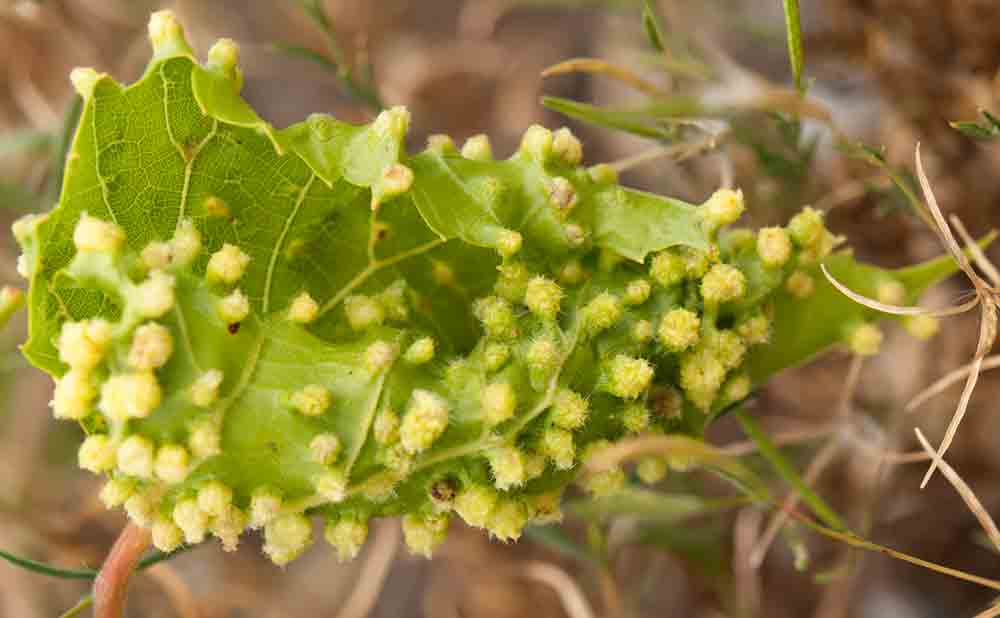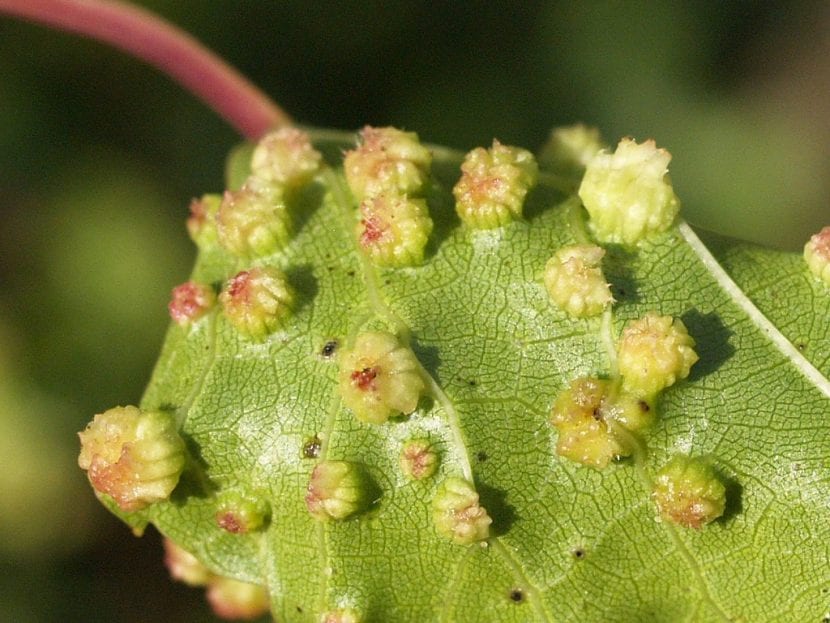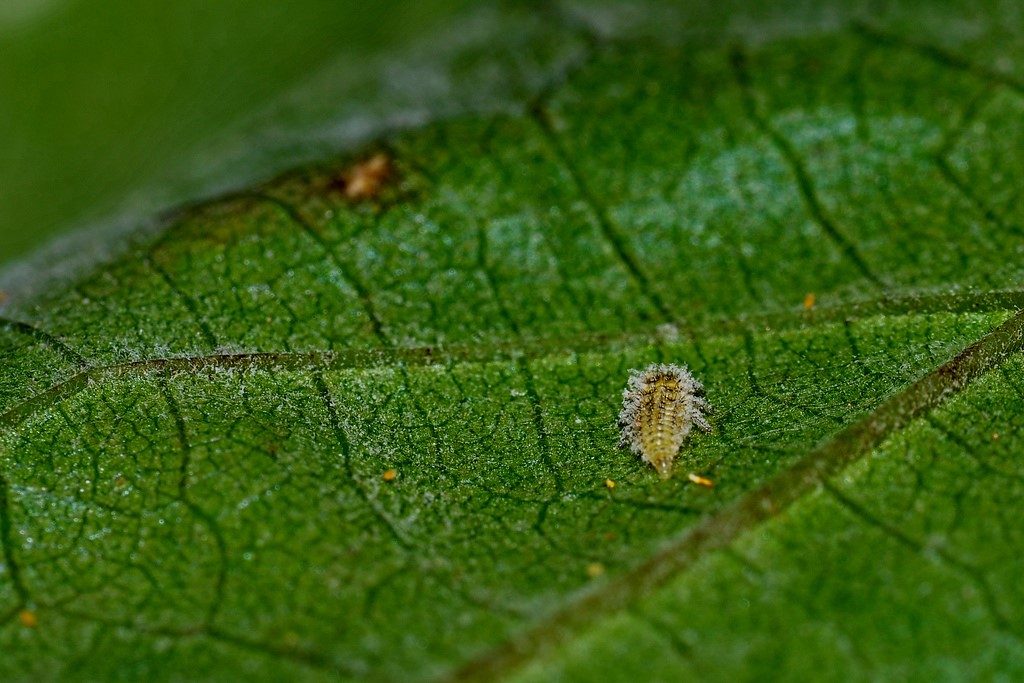
Phylloxera
Daktulosphaira Vitifoliae
Pathogène :
Insect
Type:
Risque:
CRITICAL
Pulgones





QUI EN EST LA CAUSE ?
*Daktulosphaira vitifoliae*, commonly known as phylloxera, is a hemipteran insect that mainly parasitizes the vine. This insect goes through several phases during its development, including nymph and adult stages, and adapts well to different environments. Phylloxera can reproduce both sexually and asexually, allowing it to rapidly expand its populations. Adults can lay eggs directly on the roots of the vine, from which nymphs emerge that feed on the sap, weakening the root system. The nymphs, after several molts, reach the adult state and continue the cycle. In favorable environments, phylloxera can go through several generations in a year, compounding its impact on vineyards. During colder months, nymphs may go dormant, waiting for warmer conditions to resume activity.
SYMPTÔMES
Phylloxera causes significant damage to the vine by mainly attacking the roots, resulting in general weakening of the plant and, in extreme cases, death. The wounds caused by insect feeding encourage the entry of secondary pathogens, aggravating the effects. The vine begins to show signs of water and nutritional stress, with a progressive deterioration in its development and productivity.
- Appearance of nodules or galls on the roots.
- Yellowing and premature leaf fall.
- Delay in plant growth.
- Reduction in the production of bunches.
- Gradual death of plants in severe infestations.
TEMPÉRATURE ET HUMIDITÉ
18-28°C
60-80%
VOIES DE TRANSMISSION
Contaminated soil, agricultural tools, infested plants, irrigation water
Do you want to remove this pest? Choose how you want to treat it.
TRAITEMENTS
Traitements chimiques
• POTASSIUM SALTS OF FATTY ACIDS C14-C20 48% [EW] P/V
Traitements autorisés en agriculture biologique
• POTASSIUM SALTS OF FATTY ACIDS C14-C20 48% [EW] P/V
Traitements biologiques
-
Recommandations
- Use phylloxera-resistant vine rootstocks, which have been specifically selected to avoid infestation of this insect in the vineyards.
- Implement crop rotations in areas where vines are not the only crop, which can help reduce phylloxera populations in the soil.
- Avoid planting vines in sandy soils, as these are more likely to allow the insect to spread.
- Carry out constant monitoring of the roots in search of initial symptoms of infestation, especially in young vines, to identify the problem early.
- Disinfect agricultural tools and machinery used in the vineyard, in order to prevent the spread of the insect to other areas.
- Apply authorized chemical treatments only when infestations are severe, rotating phytosanitary products to minimize the risk of resistance.
TRAITEMENTS
Remèdes maison
There are no home treatments
Alliés naturels
Traitements chimiques
There are no treatments for this disease. Treatments are directed at the insect vectors that transmit it. See insect treatments.
RECOMMANDATIONS
- Check the back of the leaves frequently, especially in dry weather.
- Spray water on the leaves to increase humidity and prevent them from settling.
- Keep plants healthy with good watering and adequate light.
- If you see cobwebs or damage, clean the leaves with a damp cloth or pressurized water.
- Use potassium soap or neem oil every few days until they disappear.
Plantes répulsives
Rosemary, Dill, Coriander
PRODUITS RECOMMANDÉS
*Les traitements recommandés sont des recommandations basées sur les bases de données des autorités et ne remplacent en aucun cas les lignes directrices établies par la législation de chaque pays.
*Les produits présentés sont des recommandations et ne sont pas nos propres produits. En tant qu'associés Amazon, nous gagnons des revenus grâce aux achats de produits recommandés.





















